It’s National Women’s History Month. In recognition of the vital role women played in American history, we would like to take this month to recognize a few notable Pinkertons, starting with Kate Warne, Pinkerton’s first female detective—and likely America’s first female detective. So much has already been written about this trailblazer, (here and here) but we would be remiss not to include her at the top of our list. After all, she boldly asked Allan Pinkerton, founder of the Pinkerton National Detective Agency, to hire her as a detective — a position traditionally held by men. Pinkerton was so impressed by her moxie and persuasion, that he hired her to infiltrate social gatherings where a male counterpart could not.
He was never disappointed.
When it came to solving crime, no one expected a woman detective, especially not one so adept at putting people at ease and drawing out their secrets. Her early success led Pinkerton to declare, “Female detectives must be allowed in my agency.” Pinkerton created the Female Detective Bureau and promoted Kate to run the division with the title of “Lady Superintendent.”
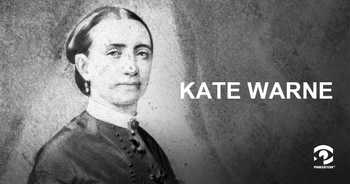
In addition to covertly escorting President-elect Abraham Lincoln to his first presidential inauguration in February 1861, Warne was one of the most noted Northern women spies during the Civil War, crossing enemy lines to secure intelligence many times for Allan Pinkerton and the Union Secret Service. She was commanding and captivating, she was cool and collected, seamlessly blending into her surroundings.
Warne and her team of Lady Pinks — as they are affectionately known around here — pursued the ends of justice.
After the Civil War, Warne remained an integral part of Pinkerton's team, serving as his indispensable "right hand." Her partnership with Pinkerton lasted until her untimely death from pneumonia in 1868, She was laid to rest in the Pinkerton family plot, a testament to her valued role in the Agency.
Hattie Lawton
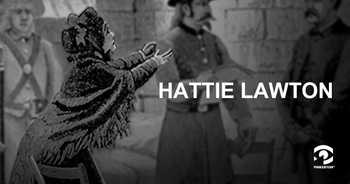
Hattie Lawton was Pinkerton’s second — and often called the best — female detective. Described as both “delicate and driven,” she was renowned at the agency for her skill in gathering vital information in undercover operations.
At the beginning of the Civil War along Pinkerton’s other female detectives, Hattie she joined the Union Secret Service led by Allan Pinkerton, who sent her on several short-term operations behind enemy lines. Pinkerton himself said that there were none more clear-headed or resolute among his operatives than Lawton, who had been remarkably successful, often escaping with rare good fortune.
When the opportunity arose, Lawton was deployed on a long-term assignment with Pinkerton Agent Timothy W. Webster to Richmond, Virginia. They posed as a wealthy married couple to gather intelligence about Confederate sympathizers and troop movements. Along with Pinkerton Agent John Scobell, an African American who posed as their servant, Webster and Lawton sent long and detailed reports describing Richmond’s fortifications, soldier morale, and food prices.
Their assignment was cut short in 1962 when Lawton, Webster, and Scobell were betrayed, arrested, and tried as spies. Scobell was released because the Confederates could not believe a servant could be a spy for the North. Webster was sentenced to death.
Lawton was sentenced to one year in prison. In 1963, she was released as part of a prisoner exchange for Belle Boyd, a well-known and often arrested Confederate spy. Not much is known about Lawton after the war, as most Pinkerton records were destroyed in the 1871 Chicago Fire. Still, we know her efforts in preserving the Union have profoundly impacted our history.
Elizabeth Van Lew
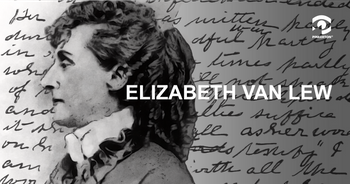
Southern socialite Elizabeth Van Lew is long remembered as one of the most effective Union spies and Pinkerton agents. Born in Virginia but educated in the North, Van Lew staunchly opposed slavery and succession.
Van Lew joined other Unionists to create an underground network to encumber the South’s war effort and covertly aid the Union. She operated a spy ring that included freewoman May Elizabeth Bowser and Confederate War and Navy Departments clerks, farmers, sewists, and storekeepers, all working for the North.
In addition, she used her position and status to give aid and comfort to captured Union troops at Libby Prison, known for deplorable conditions. She provided the soldiers with food and medicine; unbeknownst to the prison guards, she helped the Union soldiers with their escape plans. The soldiers supplied vital information about Confederate troop movement, supply trains they viewed from the prison’s windows, and planned attacks and casualties they overheard in conversations between surgeons, prison staff and guards.
Because of her vast network, she could dispatch this information to the Union Secret Service and the U.S. President himself.
Van Lew never considered herself a spy but rather a patriot for all her work on behalf of the Union during the Civil War. She was, nevertheless, inducted into the Military Intelligence Hall of Fame in 1993.
Elizabeth H. Baker
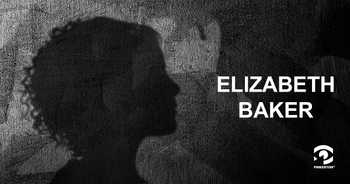
In late 1861, Elizabeth H. Baker operated out of Pinkerton’s Chicago office and was asked to go to Virginia to gather information about the Confederate Navy.
Described as a “genteel woman agent” and conversant with the culture and customs of Virginia, she willingly used her knowledge, skill, and contacts to garner an invitation into the home of old friends, a Confederate naval officer, and his socialite wife who lived in Richmond.
While living with them and under the guise of a Southern sympathizer, she also garnered an invitation to a demonstration of an unnamed, torpedoed-equipped submarine designed to battle against the Union blockade of the shipping lanes.
The day after the demonstration, Baker was taken on a tour of Tredegar Iron Works, which supplied half of the South’s domestically produced artillery. Baker witnessed the sheer volume and diversity of artillery and the production of two more submarines, iron plating for the ironclad warships, and steam engines.
Late that night, Baker sketched all she had seen on scraps of paper and included details about how the submarines operated, the number of Confederate troops in Richmond, and the city’s fortifications.
Two days later, Baker procured a travel pass, bade her hosts farewell, and returned to the North, informing Pinkerton that unless something was done and quickly, untold disaster would befall the Union cause. Pinkerton relayed the urgent message to the Union Navy.
While the newspapers stated that the discovery of a peculiar machine “by a mere accident” saved the Federal fleet off the James River from destruction, Pinkerton said that the real credit was due to Baker, who performed a “great service to the nation.”
Mary Touvestre
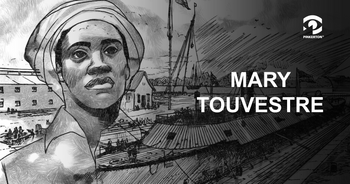
As a formerly enslaved person, Mary Touvestre was employed as a housekeeper for an engineer who was refitting the burnt-out USS Merrimac into the Confederate’s first ironclad warship, the CSS Virginia. She overheard the engineer talk about his work and recognized the threat this type of warship posed to the Union Navy blockade. The engineer routinely brought home the plans for the ship, and seizing an opportunity, Touvestre stole the plans. She sewed the information into the hem of her dress and fled, risking her life to make the treacherous 190-mile journey on foot from Norfolk, Virginia, to Washington, D.C., where she talked her way into a meeting with both the Secretary of the Navy and Allan Pinkerton, the head of the Union Secret Service.
While the Union Navy was unsuccessful in stopping Virginia’s reign of destruction entirely, the information Touvestre provided helped the Union Navy to find vulnerabilities and stop an untold number of deaths.
This list is but a few of the women who made history. There are so many more. So, here’s to all the Lady Pinks — past and present — who shaped the Pinkerton Agency and continue to make history.





